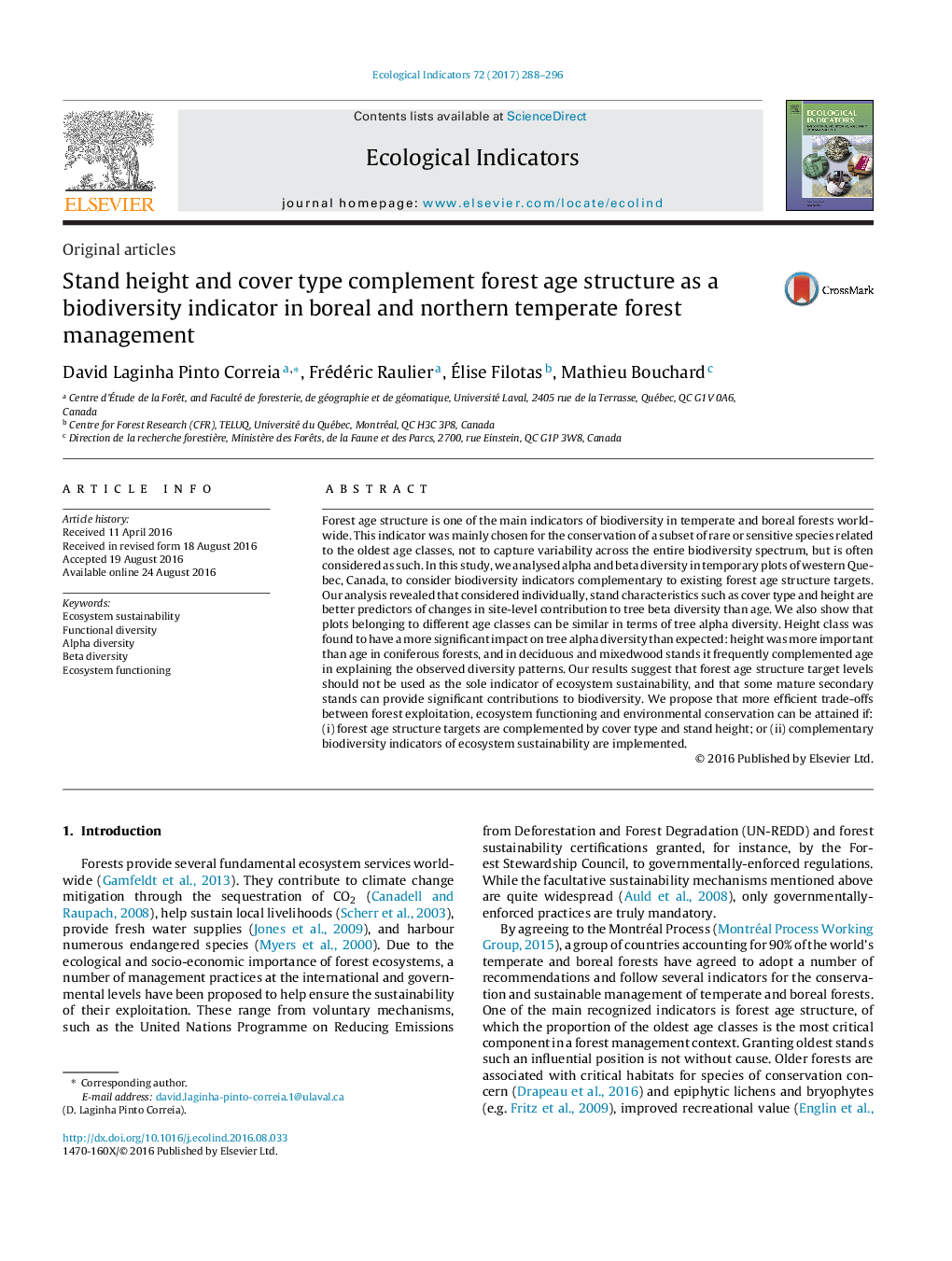| کد مقاله | کد نشریه | سال انتشار | مقاله انگلیسی | نسخه تمام متن |
|---|---|---|---|---|
| 6292759 | 1617130 | 2017 | 9 صفحه PDF | دانلود رایگان |
- Stand cover type and height explained changes in beta diversity better than age.
- Stand characteristics were better than climate at predicting beta diversity.
- Some stands within different age classes were similar in terms of tree diversity.
- Forest age structure is likely not an indicator of overall ecosystem sustainability.
- Complementary biodiversity indicators should be integrated in forest management.
Forest age structure is one of the main indicators of biodiversity in temperate and boreal forests worldwide. This indicator was mainly chosen for the conservation of a subset of rare or sensitive species related to the oldest age classes, not to capture variability across the entire biodiversity spectrum, but is often considered as such. In this study, we analysed alpha and beta diversity in temporary plots of western Quebec, Canada, to consider biodiversity indicators complementary to existing forest age structure targets. Our analysis revealed that considered individually, stand characteristics such as cover type and height are better predictors of changes in site-level contribution to tree beta diversity than age. We also show that plots belonging to different age classes can be similar in terms of tree alpha diversity. Height class was found to have a more significant impact on tree alpha diversity than expected: height was more important than age in coniferous forests, and in deciduous and mixedwood stands it frequently complemented age in explaining the observed diversity patterns. Our results suggest that forest age structure target levels should not be used as the sole indicator of ecosystem sustainability, and that some mature secondary stands can provide significant contributions to biodiversity. We propose that more efficient trade-offs between forest exploitation, ecosystem functioning and environmental conservation can be attained if: (i) forest age structure targets are complemented by cover type and stand height; or (ii) complementary biodiversity indicators of ecosystem sustainability are implemented.
Journal: Ecological Indicators - Volume 72, January 2017, Pages 288-296
